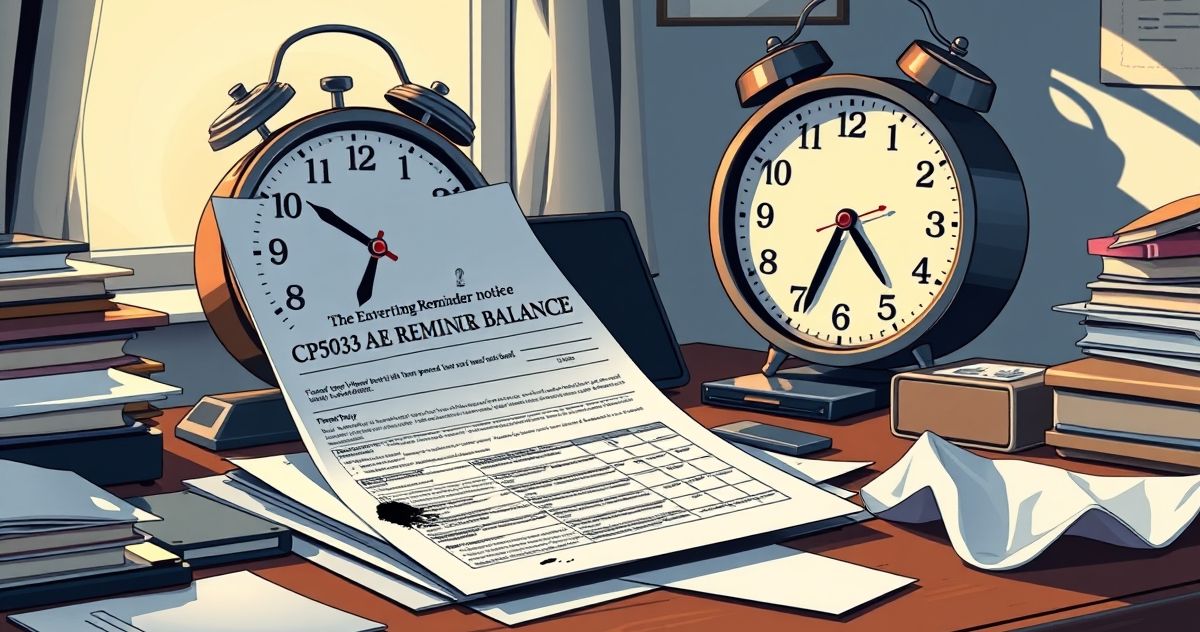Understanding the CP503AE Reminder
The CP503AE Reminder is a notification sent by tax authorities, typically the IRS, to inform taxpayers of an outstanding balance on their tax account. It serves as a critical alert mechanism, reminding the taxpayer of their obligation to pay the overdue amount and outlining the potential consequences of continued non-compliance.
Primary Purpose of the CP503AE Reminder
The primary purpose of the CP503AE Reminder is to notify taxpayers that they still owe a tax balance that has not been paid despite previous communications. This notice emphasizes the necessity to settle the dues promptly to prevent further actions from the tax authorities. It acts as an urgent reminder that the taxpayer’s account requires immediate attention, as ignoring it could lead to additional penalties and interest.
Key Features of the CP503AE Reminder
Several key features define the CP503AE Reminder, making it an essential document in the tax compliance process:
- Clear Notification: The reminder clearly states the amount of outstanding tax liability, including any applicable penalties and interest accrued to date.
- Due Date Specification: It provides a specific due date by which the taxpayer must pay the overdue amount to avoid further penalties.
- Explanation of Charges: The notice itemizes the charges, providing the taxpayer with clarity on how the total amount was calculated, including the original tax, penalties, and interest.
- Instructions for Payment: It includes detailed instructions on how to make a payment, often providing various options such as online payments, checks, or deposits.
- Contact Information: Essential contact information is provided, enabling the taxpayer to reach out to the tax authority for further clarification or assistance.
Relevant Filing and Compliance Requirements
Receiving a CP503AE Reminder signifies that the taxpayer has missed previous opportunities to settle their tax obligation. As such, it comes with certain compliance expectations.
Taxpayers are required to review the notice thoroughly to understand the details of the unpaid balance and ensure that the amount calculated is accurate. If discrepancies are found, it’s imperative to contact the tax authority immediately. Compliance here means either full payment of the owed amount or initiating contact with the IRS to discuss potential payment plans or disputing any errors found in the notice.
Moreover, the taxpayer should ensure that all future filings and payments are made on time to prevent subsequent reminders signifying non-compliance.
Penalties and Consequences for Non-Compliance
Failure to respond to the CP503AE Reminder can result in a host of penalties and consequences. Significant non-compliance may lead to:
- Accrual of Additional Interest and Penalties: As long as the balance remains unpaid, interest may continue to accrue, and penalties may be added to the tax due amount.
- Collection Actions: Continued non-compliance might trigger enforcement actions from tax authorities, such as levies or liens against the taxpayer’s property or assets.
- Potential Legal Action: In extreme cases, taxpayers might face legal proceedings to recover the outstanding debts.
These penalties not only increase the financial burden but can significantly affect the taxpayer’s credit rating and financial standing.
Importance of the CP503AE Reminder in Tax Resolution
The CP503AE Reminder plays a crucial role in tax resolution and overall financial compliance. By highlighting an outstanding tax debt, it prompts taxpayers to take immediate action, preventing further accumulation of debt and assisting in maintaining good standing with tax authorities.
For taxpayers experiencing difficulty in paying the full amount due, the reminder serves as a catalyst to explore alternative options such as installment agreements or applying for hardship status, which can tailor the repayment plan to fit the taxpayer’s financial capability.
Overall, addressing a CP503AE Reminder promptly not only mitigates financial risks but also helps taxpayers avoid more severe consequences associated with tax non-compliance. It ensures timely resolution of tax issues, fostering a transparent relationship between the taxpayer and the tax authorities, which is beneficial in the long term for maintaining a clean tax record.
In conclusion, the CP503AE Reminder is a pivotal document in the communication framework between tax authorities and taxpayers, designed to encourage compliance and prompt action towards resolving outstanding tax obligations. Engaging with it proactively can save taxpayers from avoidable penalties and complications, reinforcing the importance of being informed and responsive in tax matters.

